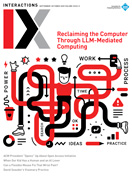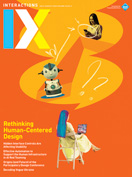Authors:
Rae Yule Kim
Data is increasingly important for user experience (UX) designers. One example of a data-driven UX strategy is the personalized recommendation algorithm. As one of the leaders in this technology, Amazon collects customer data about their shopping and search patterns to derive personalized recommendations, which, in turn, optimizes user experiences and maximizes the chances of sales. Similarly, Netflix and Zillow have been two of the biggest beneficiaries of personalized recommendation algorithms for growing their businesses. Insights → Data is a valuable resource for UX design. → Data provides insights into behavioral patterns that are not easily observable. → UX…
You must be a member of SIGCHI, a subscriber to ACM's Digital Library, or an interactions subscriber to read the full text of this article.
GET ACCESS
Join ACM SIGCHIIn addition to all of the professional benefits of being a SIGCHI member, members get full access to interactions online content and receive the print version of the magazine bimonthly.
Subscribe to the ACM Digital Library
Get access to all interactions content online and the entire archive of ACM publications dating back to 1954. (Please check with your institution to see if it already has a subscription.)
Subscribe to interactions
Get full access to interactions online content and receive the print version of the magazine bimonthly.






